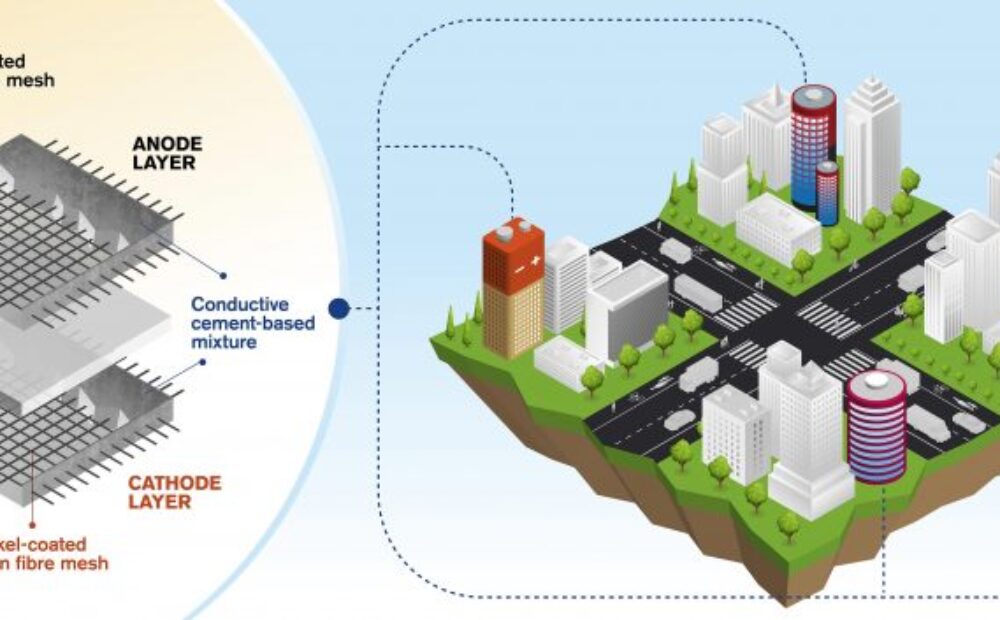Imagine an entire twenty-story concrete building that can store energy like a giant battery. Thanks to unique research from Chalmers University of Technology, Sweden, such a vision could someday be a reality. Researchers from the Department of Architecture and Civil Engineering recently published an article outlining a new concept for rechargeable batteries — made of cement.
The ever-growing need for sustainable building materials poses great challenges for researchers. Doctor Emma Zhang, formerly of Chalmers University of Technology, Sweden, joined Professor Luping Tang’s research group several years ago to search for the building materials of the future. Together they have now succeeded in developing a world-first concept for a rechargeable cement-based battery.
The concept involves first a cement-based mixture, with small amounts of short carbon fibers added to increase the conductivity and flexural toughness. Then, embedded within the mixture is a metal-coated carbon-fiber mesh — iron for the anode, and nickel for the cathode. After much experimentation, this is the prototype which the researchers now present.

The idea is still at a very early stage. The technical questions remaining to be solved before commercialization of the technique can be a reality include extending the service life of the battery, and the development of recycling techniques. “Since concrete infrastructure is usually built to last fifty or even a hundred years, the batteries would need to be refined to match this, or to be easier to exchange and recycle when their service life is over. For now, this offers a major challenge from a technical point of view,” says Emma Zhang.
But the researchers are hopeful that their innovation has a lot to offer. “We are convinced this concept makes for a great contribution to allowing future building materials to have additional functions such as renewable energy sources,” concludes Luping Tang.
Reference: “Rechargeable Concrete Battery” by by Emma Qingnan Zhang and Luping Tang, 9 March 2021, Buildings.
DOI: 10.3390/buildings11030103
The research project was funded by the Swedish Energy Agency (Energimyndigheten).
Source: Scitechdaily














